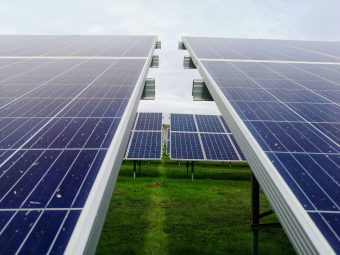
The prevailing stance in expert circles today regarding solar energy is undeniably positive. Particular emphasis is placed on its achieved technological maturity and the most rapid growth trend compared to other renewable energy sources, making comparisons with the future share of fossil fuels even more compelling. For the future of energy, an optimal mix that includes wind energy and hydropower, with a carefully measured place for nuclear technologies and moderate hope for nuclear fusion technologies in the more distant future, is indeed being considered.
Energy perspectives on the consumption side must account for the electrification of transport (where feasible) and strong electrification of the heating and cooling sectors and industry. It is essential to focus on reducing energy consumption to improve energy efficiency indicators and possibly due to changes in value systems in what we call the geopolitical West, where there are tentative theories about the need to reduce per capita consumption at this level of development to achieve sector sustainability (degrowthers). Electricity production perspectives balance consumption perspectives.
IN FOCUS:
- The RES SERBIA 2024 Conference Announces new Investments for a Greener Serbia
- Organela – The Harmony Of Clean Energy and Organic Agriculture
- PV Power Plants on Flat Roofs
For instance, in Europe in 2022, there was a production of 5.7 MWh/ person, and by 2050, a production of 11.7 MWh/person is expected, dominated by renewable energy sources (RES), primarily solar. As an illustration, the final consumption of all types of energy in Europe was 31 MWh/person in 2022, and it is expected to be 23 MWh/person by 2050 due to the impact of the previously analyzed trends. The concept of sustainable development, which sees environmental degradation as the central problem, is often accompanied by much demagoguery. Its main opponent is fundamentally liberal capitalism, which, with its growing hunger for profit, is practically in a perpetual war with sustainability. In 2023, 500 GW of RES capacities were built – a record year!
Of that, 50 per cent of the new RES capacities were built in China. Almost all analyses show that we will reach the peak use of all fossil fuels before 2030, followed by an accelerated decline in the share of fossil fuels in the energy sector. It is worth noting that, according to analyses, the RES sector will participate with about 80 per cent in the construction of new energy capacities in 2030, with solar technologies dominating with more than 50 per cent share. The growth trend of solar capacities is well illustrated by the fact that 220 GW of new solar capacities were built in solar power plants in 2022, and 500 GW of new solar capacities are expected by 2030. Decentralization refers to electricity production from small, geographically distributed renewable energy sources.
Decentralization (distributed production) also brings elements of democratization to the sector by dismantling monopolies of large energy giants. This segment is particularly significant for solar technologies, with solar panels installed on the roofs of family homes, public institutions, parking lots, supermarkets, and factories. In the future, decentralized production of all types of energy is expected to meet almost a third of total energy needs, with solar technologies again standing out as dominant due to their modularity, low cost, environmental friendliness, and potential for installation on vertical facades, car roofs, and numerous unconventional solutions.

Centralized production remains dominant (large power plants) but in synergy with decentralized production, which practically does not burden high-voltage transmission networks, forming an optimal hybrid mix. Agrosolar, or the simultaneous use of land for electricity production through solar panels and food production or biomass, is a significant segment of solar technology applications. The use of agrosolar in viticulture has already proven remarkably successful, where grape yields under solar panels, which have adjustable angles, are somewhat reduced, but accelerated airing of the vines after rain minimizes the development of fungal diseases, achieving optimal sunlight conditions (not too much, not too little sun), leading to a winwin situation with additional income from the produced electricity. For the development of large solar projects, it is crucial to successfully solve three parts of a complex puzzle: land (with the labyrinth of urban project development), grid connection (with realistic and conservative limitations imposed by grid operators), and the power purchase agreement (PPA) for the produced electricity (ensuring project bankability).
A significant characteristic of the energy transition in recent years is undoubtedly the speed of change, especially in reducing solar panel and battery technology costs. It is essential to note that hybrid solutions (combining solar power plants with powerful batteries at the same location as one balancing group) are very competitive today.
Professor Nikola Rajaković, PhD
Read the whole story in the new issue the Energy portal Magazine AGROSOLAR ENERGY AND RES.



